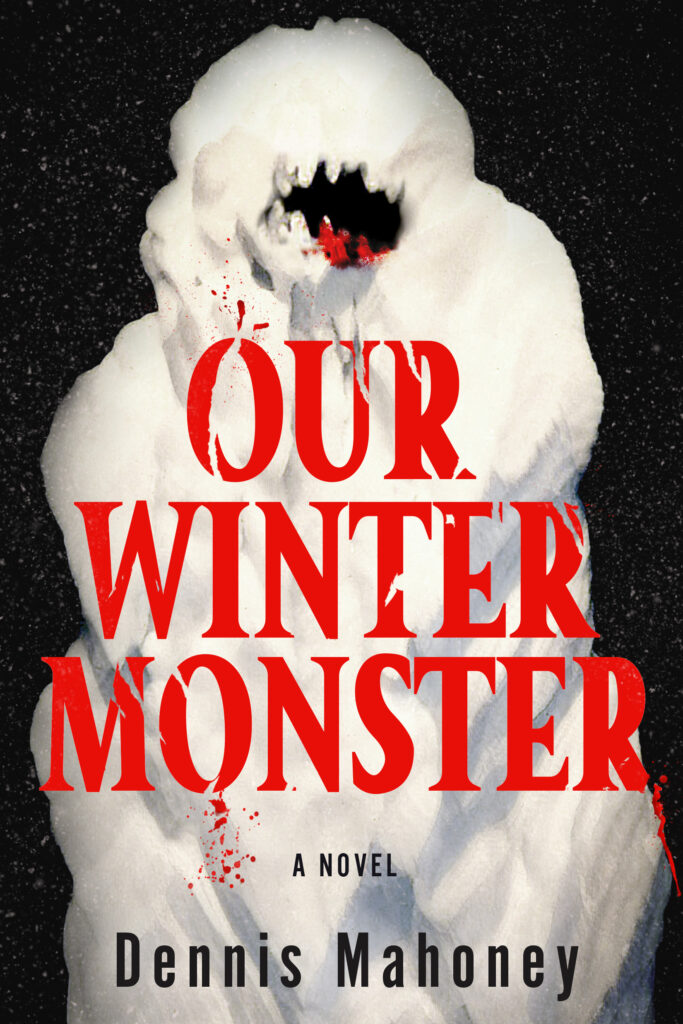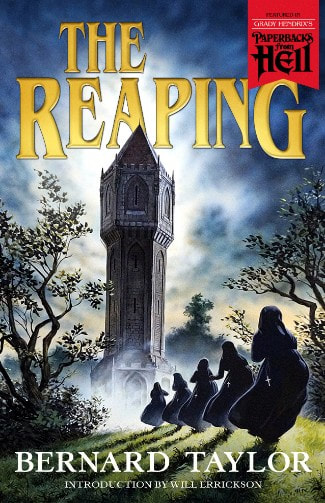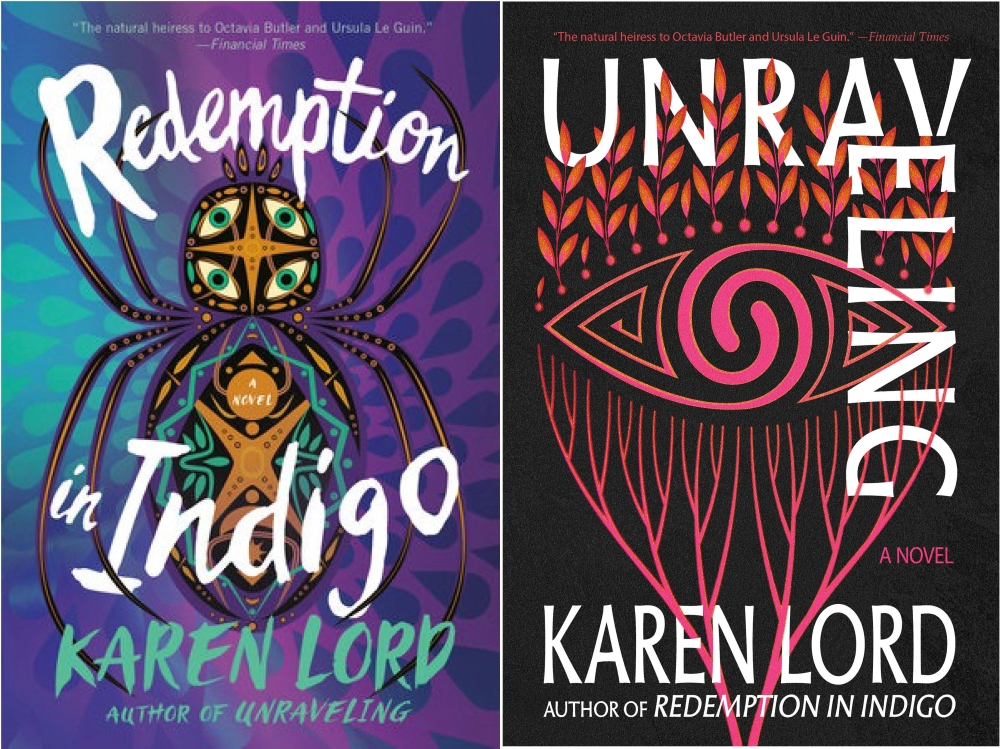On the X Trilogy by Ti West and Mia Goth

“I’ve now gone back and re-watched the entire trilogy across two days to put some of my thoughts on the X series down, including possible answers to that question, and an argument for why that third film should be better appreciated within the context of the series as a whole.”
Book Review: OUR WINTER MONSTER by Dennis Mahoney

I’ve got a soft spot for winter horrors, where the frigid environment compounds human or supernatural threats. Perhaps its the dose of familiarity I have with winter’s beauty and winter’s dangers that makes the setting work so well for me in fiction. Anyone else who likes such seasonal scares should check out Our Winter Monster by Dennis Mahoney, just published by Hell’s Hundred Books, a new horror imprint from independent publishers Soho Press. As the chilly winds and ice continue outside, there’s no better book to curl up with under a warm blanket and a warm beverage at hand. As much as I enjoyed the novel and would recommend it to particular readers, Our Winter Monster has several weaknesses combined with its many strong points. These add up to a solid thriller that will entertain many general readers and horror fans, but which fails to achieve a potency or quality that its premise or Mahoney show potential for. The summary provided by the publisher for Our Winter Monster does a great job of succinctly relating the plot: For the last year, Holly and Brian have been out of sync. Neither can forget what happened that one winter evening; neither can forgive what’s happened since. Tonight, Holly and Brian race toward Pinebuck, New York, trying to outrun a blizzard on their way to the ski village getaway they hope will save their relationship. But soon they lose control of the car—and then of themselves. Now Sheriff Kendra Book is getting calls about a couple in trouble—along with reports of a brutal and mysterious creature rampaging through town, leaving a trail of crushed cars, wrecked buildings, and mangled bodies in the snow. To Kendra, who lost another couple to the snow just seven weeks ago, the danger feels personal. But not as personal as it feels to Holly and Brian, who are starting to see the past, the present, and themselves in a monstrous new light . . . Let’s start with some of the things I think Mahoney does really well with Our Winter Monster. The wintry environment is like a character unto itself, manifested into a monster of swirling ice and snow that evokes fear. As the plot summary suggests, the exact nature of this monster is a mixture of supernatural and psychological, a metaphoric manifestation of trauma in Holly & Brian’s past that they are partially trying to work though, and partially trying to ignore/forget. Psychological horror manifesting in physical ways is nothing new to horror, but Mahoney pulls this off very well, blending past and present through the novel. Where Our Winter Monster could easily be written more towards the thriller or mystery end of the genre spectrum, Mahoney solidifies the horror aspect with frightening images of the snow monster, the psychological fear of characters not being able to control themselves, and the violence/gore of the deaths. Characterization is one aspect of the novel that has both successes and failures. Holly and Brian stand out with the most development (understandably as the protagonists.) As the reader discovers more of their past and what is to come during this present night of trial, one can see a great arc in each of them as individuals as well as the two of them as a couple who love one another. Mahoney integrates these characters very well with the plot to show how their difficulties of relating to one another stem from the trauma that make them unsure of each of them, themselves. They have to learn how to face themselves and the individual decisions of their past. Yet, they find the strength to do this together. As the thematic core of Our Winter Monster, Mahoney does a phenomenal job in these characters and how they drive the plot. However, the secondary characters don’t come off as well. The amount that Kendra is in the novel necessitates deeper development then ends up being there. It seems as if her story should intersect in ways with Holly & Brian’s, yet I didn’t finish the novel with any sense of this being the case. Likewise, another secondary character, Tanner, could have been more fully developed, given how central he ends up being to the plot. I felt this particularly so because his role ended up feeling very predictable, even from his first appearance on the pages. Beyond being a horror novel through the story of Holly & Brian, Mahoney seems to be adding a mystery novel with the secondary characters, and this half just doesn’t have the same heart, resonance, or novelty to it. The other significant critique I would make of Our Winter Monster is that Mahoney tends toward fully explaining things to readers rather than letting ambiguity or subtlety rule. For an undemanding reader just looking for some entertaining diversion without having to invest too much focus, this approach will work on point. But an approach toward the other end of the spectrum would have helped make the novel into something more special. As I write this, I’m realizing Our Winter Monster is an interesting novel that straddles the line between mass market thriller for casual readers and psychological/supernatural horror novel for fans who are familiar with the genre tropes. By casting this bimodal net Mahoney’s book would probably capture the interest and admiration of both kind of readers while also leading to disappointing some from each camp. Perhaps because I’m fine with switching between the two branches of reading, even within a single work, the novel ended up scoring overall with me. Beyond this, I’m very interested in seeing what else Hell’s Hundred releases in the future.
Movie Review: STREET TRASH (2024) Directed by Ryan Kruger

“In terms of cheesy entertainment, I probably prefer the original. But I also enjoyed this new version for what it is, and for much of what it adds to balance things a bit more.”
Paperbacks from Hell #3: THE REAPING by Bernard Taylor

The story just exudes a gothic atmosphere that gets increasingly bizarre in ways that simultaneously attract and repel Rigby and the reader. There’s a slow build of discomfort and the sense that something is just a bit off, slowly increasing in creepiness as Rigby’s curiosity and failings further entrap him in the situation.
On Karen Lord’s REDEMPTION Series

Where Redemption in Indigo reads folksy, and frequently comical, Unraveling turns more into the subgenre of dark urban fantasy, with shades of a mystery police procedural added into a shadowy mix. Lord constructs the story as a labyrinthine exploration across dreams and realities, beyond the normal (human) flows of time and space.
2024 Reflections: A Few of Our Favorite Things

For our last post of 2024, each of the Skiffy & Fanty blog contributors has provided some reflections on some of our favorite things that genre gave us this last year. Please let us know about yours, and we’ll see you again in 2025! TRISHInevitably, once this goes live, I’ll think of other things I should have mentioned. All I can do now is apologize in advance to whatever I’ve neglected. Nonfiction: A City on Mars by Kelly Weinersmith and Zach Weinersmith, which discusses the feasibility (or rather, not) of settling Mars with current or near-future technology. Unfortunately, there are great challenges to be overcome, which make this a distant possibility, but the Weinersmiths leaven this depressing conclusion throughout with illustrations and humor. RPGs: I really enjoyed playing Star Trek Adventures and Stargate earlier this year, but they’ve been on hiatus for months. My favorite new game is a role-playing game campaign using adapted rules from Cold City: Hot War (https://handiwork.games/cold-city-hot-war) but set in London a few months after the Martian invasion in H.G. Wells’ War of the Worlds. The campaign is called Thunderchild, and everyone in the party has the overt agenda of working for an agency seeking to gather up Martian technology and keep it out of the hands of the Wrong People, but each of us has a hidden agenda. I’m playing the daughter of an industrialist and secret suffragette (well, obviously a suffragette, but I’ve concealed how radical my character is); we also have a royal nth-cousin who’s angling toward the throne, a journalist who’s secretly a spy, and a spy who’s secretly an anarchist. I met the GM and players via the Discord for The Good Friends of Jackson Elias, and I’m having a blast with the yes-and cooperative play (well, the Players are cooperating to create a good game/story, although the Characters are at odds). But since none of my dear readers can check out this game, instead I recommend checking out Jason Thompson’s Dreamlands, which can be as imaginative as you want to make it. Podcasts: The happiest surprise this year has been Season 11 of Mike Duncan’s “Revolutions” podcast. A factual history podcast until now (Duncan was famed for his The History of Rome podcast before Revolutions), it has become a future-history recounting of the Martian Revolution. He’s taking all the dreadful lessons provided by past real revolutions, looking at current economic and political trends, and using them to weave a sardonic yet convincing and compelling narrative of how things might go in the future. (Subtle salutes to other Martian fiction writers include naming a corporate division after Kim Stanley Robinson.) Videos: I haven’t watched many movies this year, mainly assigned viewing for Skiffy and Fanty shows and Hugo voting. I enjoyed individual episodes of “First Level” and “What If?” but found each series a bit spotty. I loved “Agatha All Along” except that I found the final episode a bit disturbing, since I didn’t think she did nearly enough to deserve what happened at the end. Science Fiction Novels: Shockingly, I don’t seem to have read much pure science fiction, without any fantasy elements, in the last year. I’m making an effort to include more in my 2025 selections. I thought Some Desperate Glory, by Emily Tesh, was absolutely great; I’d passed it up in the library because it looked like fairly standard Chosen One milSF, but gave it another chance when it was nominated for a Hugo, and wow, I’m glad I did! The initially arrogant main character goes through a huge amount of learning and growth, and the shifts in reality are mind-blowing. It deserved its win for Best Novel. I also really enjoyed what eventually became a Lodestar nominee, Liberty’s Daughter by Naomi Kritzer; it stirred a lot of interesting thoughts and comparisons, which I wrote up for Skiffy and Fanty. Science Fantasy Novels: I adored Andrea Hairston’s Archangels of Funk; it’s the third in a series, but you don’t need to have read the previous books to dive into this one. As I said in my review here, “This is a fantastic near-future book that combines magic and hopepunk with vibrant, joyful optimism, where a diverse community works together to survive and thrive as an independent cooperative amid an increasingly corpocratic world.”I also thought Lost Ark Dreaming by Suyi Davies Okungbowa was really good. It seemed at first to be pure dystopian fiction (civilization has retreated into partly submerged towers), and was good at that and at characterization, but fantastic elements eventually made their presence known. Fantasy: Equally great in very different ways were The Naming Song, by Jedediah Berry, Someone You Can Build a Nest In, by John Wiswell, and To Shape a Dragon’s Breath, by Moniquill Blackgoose (which won the 2024 Lodestar). Each book has a strong focus on identity, and who gets to define that, and how and whether a recipient of labels can accept that, hide, or resist how they’re perceived, and how sometimes unexpected allies can be found, and bonds of community can be formed. Wiswell’s book is full of wicked humor; Berry’s features perhaps more thoughtful questionings; Blackgoose’s is strong, smart, and proud; each is pretty amazing, depending on what mood you want to explore. PAUL2024 was a year rich in much SFF content. There was always something new to read, to watch and to experience in the land of speculative genre. Books: I might as well start with the trickiest one that I consume the most of. I read a lot and figuring out a Hugo ballot, much less my single favorite book is always a challenge. I am going to land on Jedediah Berry’s The Naming Song, one of the most unique and strange visions of a post apocalyptic world that I have ever seen. One might think of this as science fantasy, or allegory, the world where words are only brought back into the world when they are defined is a weird one, and how this society

